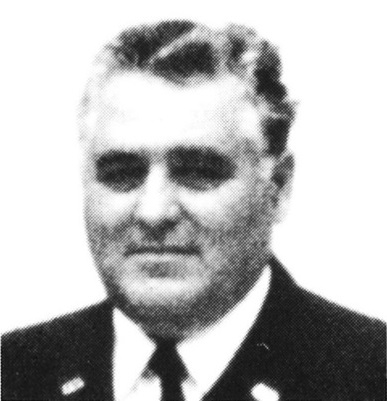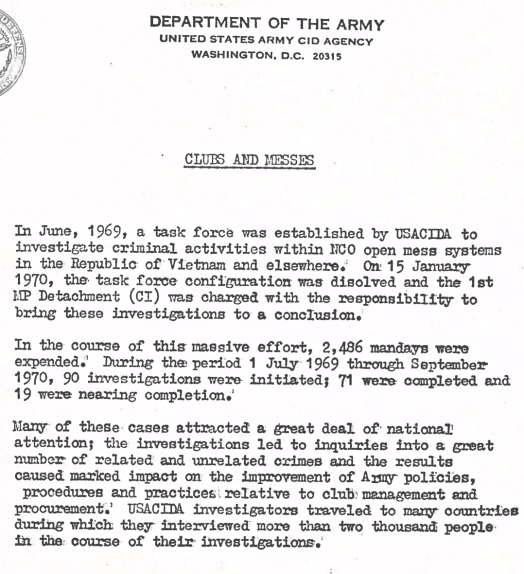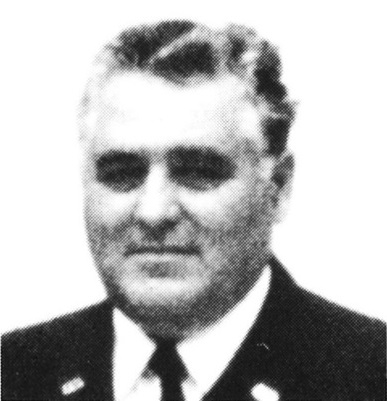By Francesco Amicone
Source: Libero, April 23, 2021
On the sixth floor of the Palazzo di Giustizia in Florence, Public Prosecutor’s Office section, in a folder perhaps labeled “Joe Bevilacqua” maybe “Zodiac” a report has been kept for more than three years on the admission of guilt of a former witness of the Pacciani Trial relating to the double murders of the Monster of Florence. The Pubblico Ministero in charge of the case is Luca Turco, the magistrate who investigates former Italian premier Matteo Renzi.

Bevilacqua – Joseph, for the US agencies, registered as Giuseppe in Italy – is a former American soldier of Italian ancestry. After leaving the Army, he worked at the American cemetery in Florence, in San Casciano in Val di Pesa, from July 1974 to the end of 1988. In the complaint, it is reported that he spontaneously admitted to myself that he was responsible for the murders of the Florentine serial killer and the “Californian” Zodiac, saying “I did not want to get others in trouble” and “they knew”.
DNA and calligraphic comparisons
The Florence Public Prosecutor’s Office has recently acquired Bevilacqua’s DNA. A few months ago, the former director of the American cemetery in Florence did a test at the request of the Public Prosecutor’s Office of Siena, as part of the investigation into the murder of taxi driver Alessandra Vanni, killed in 1997 in Castellina in Chianti. The test result was negative.
It is currently unknown whether a request has also been received for Bevilacqua’s DNA from the United States or whether the former Italian-American sergeant was also subjected to a comparative examination of handwriting.
Zodiac has in fact left a vast repertoire of samples of his handwriting consisting of various letters delivered to the police and American press, mainly written in lowercase letters.

Should I bring the gun?
On June 19, 2018, following the complaint about Bevilacqua that I filed in March in Lecco, a new, long report on what had happened in the previous summer was given to the Florentine judicial police.
The partial confession of “Joe”, I told the investigators, took place during a phone call lasting a few minutes, at the end of a series of interviews at his home, a town in the province of Florence where he has been permanently residing since 2010. “Let’s not talk on the phone about these things,” he asked me, not at all calm, as I told him that there was his name in the letters of Zodiac. His admissions followed.
Bevilacqua argued that, after so many years, the investigators could not prove that he was the culprit, at least not in the United States. “Joe” worked for the Criminal Investigation Division, headquartered in Washington D.C. and Falls Church, Virginia, at the time of the Zodiac crimes, between the 1960s and 1970s. There would be no trace of his presence in California in military records. Eventually, however, he gave up. It was hopeless. I advised him to turn himself in.
“What should I bring to the carabinieri? The gun?” He asked.
“Yes, bring it all”.
I remember a groan of pain from his wife, Meri. Frustrated by an unusual interference that began with the word “lawyer”, Bevilacqua handed her the phone to get the mobile number of attorney Francesco Moramarco, which I suggested him.
Those are the facts reported by me in the complaint. I also told the Carabinieri, and I remain convinced, that the phone conversation between Bevilacqua and me had been intercepted. By who? I have no idea.

Complaint
Bevilacqua was supposed to turn himself in at Borgo Ognissanti headquarters of the provincial command of the Carabinieri of Florence, but two days after the admissions, when I showed up in the city to accompany him, he had changed his mind. We had a fight over the phone and have not a talk since then. Over the next 24 hours, I sent two separate reports to the police and carabinieri from a certified mailing address. I thought they would investigate.
I later told investigators that I had not recorded the interviews with Bevilacqua and had no samples of his writing, other than a signature. I had not even taken a photograph of the Celtic cross, the symbol of the American serial killer, drawn on the first page of the album containing pictures of “Joe” from fifty years ago.
Nothing happened for months, so I decided to make a complaint. It was March 2018. In May, I wrote a few newspaper articles and the story exploded in the media. There was a denial with threats of lawsuit by Bevilacqua. A source told me that one of the victims’ lawyers, Vieri Adriani, had filed a request to investigate me for obstruction.
In recent months, however, something moved, and a turning point could come in the case.
Decryption delivered to the carabinieri
Last December the most famous cipher text sent by Zodiac to the American press was cracked. Yesterday, the complete decryption of Bevilacqua’s name in the 13 symbols that the serial killer Zodiac sent to the San Francisco Chronicle more than half a century ago was delivered to the carabinieri of Borgo Ognissanti, in Florence. The key word “BEKIM” appears clearly in the decryption. A detail that is linked to the events of the Monster.

When the letter was postmarked in San Francisco, on April 20, 1970, six cinemas and drive-ins in the city and the bay area, location of the serial killer’s misdeeds, were screening “The Adventurers”, the first of the very few films by Hollywood starring Bekim Fehmiu. The Yugoslav actor was known to the Italian public of those years for the interpretation that made him famous: Ulysses. The first rerun of the “Odyssey” series with Fehmiu as protagonist was broadcast on Italian RAI channel 1 in July 1974, when Bevilacqua moved to the American cemetery in Florence, two months before the first crime officially attributed to the Monster occurred.
Forty years later, intercepted in the Pisa prison, Mario Vanni, a postman from San Casciano convicted for four of the seven double murders attributed to the Monster from 1974 to 1985, accused an American who called himself “Ulysses” of the crimes. Pacciani, the best-known defendant in the Monster case, allegedly told Vanni that he had met him “in the wood”. Ulysses, perhaps without being initially believed, would have confessed to him that he was the “couples maniac”. For some reason, Pacciani would have called him “black”. It is possible that he was not referring to the color of the skin, but to the Celtic cross with which the serial killer signed himself and which he had embroidered on his black hooded disguise, worn on the occasion of an attack to a couple in 1969. Pacciani, in short, could have mistaken the Zodiac for a neo-fascist, a “black”.

Ulysses
Investigators had never heard of Ulysses before 2003. At the time, they believed he could identify with Mario Robert Parker, an American gay designer who lived near a crime scene in 1983. The identification was a failure. Parker’s family had never heard about “Ulysses”. Witness Gabriella Ghiribelli, who would have identified him in Parker, had stated that “Uli” was not black, unlike the suspect. The issue was left unresolved in 2008, when the line of investigation into which search for Ulysses was part ended with the acquittal of pharmacist Francesco Calamandrei, one of the alleged “instigators” of the Monster’s murders.
In 2018, I told the judicial police that I had shown the interception of Vanni to Bevilacqua. He was silent for a few seconds and then he exclaimed furiously: “I think they’ll kill him. I think they’ll kill Vanni ”. He patted me on the stomach. “Thanks for telling me.” He didn’t know that Vanni was already dead.
The day after Bevilacqua’s deposition at the Pacciani trial, on June 6, 1994, La Repubblica headlined a news piece signed by Franca Selvatici in: “Pacciani was in the woods”. The former superintendent of the Florence American cemetery claimed to have seen the defendant at the edge of the Scopeti wood a few days before a double murder committed by the Monster took place in that area in 1985.
Neither Bevilacqua nor Pacciani said they knew each other at the trial, but, I told the investigators, the American told me that they had met several times before his deposition. Pacciani habitually frequented the Scopeti wood and also tried to get hired at the American cemetery, without success. It is understandable that Pacciani, to avoid placing himself in the crime zone, pretended not to know Bevilacqua, but how would American’s reticence be explained?

The CID investigation in San Francisco
Bevilacqua did not go to the Pacciani trial claiming to be a former US Army sergeant with a 20-year career and a tour of duty in Vietnam. He simply introduced himself as a former superintendent of the American cemetery and, at the request of lawyers, as a former “criminal policeman”.
For ten years, starting in 1964, Joe was with the Criminal Investigation Division as an investigator and undercover agent. For this reason, some of his assignments are absent from public military records, including those in California when he investigated the “Khaki Mafia” case. In 2017, Bevilacqua still had the book on that investigation written by June Collins and Robin Moore. The story exploded in the American media on October 1, 1969, coinciding with the Zodiac case.
The highest-ranking suspect in a sort of “military mafia” was Army Sergeant Major William O. Wooldridge. The investigative reports of the Army’s CID show that the investigations focused on Vietnam and California, where Maredem, the company with which some NCOs including Wooldridge did business with military clubs and messes managed by corrupt personnel, was based.
Dozens of CID agents around the world, also Bevilacqua, were involved in the investigation. At least three investigations on the Khaki Mafia took place in San Francisco, from July 1, 1969, until the end of 1970, when Zodiac struck and sent his letters.
A testimony dating back to January 2019 under investigation by detectives confirms that Bevilacqua carried out undercover investigative activities while in the Army.

New developments
Other witnesses may be added soon, if U.S. authorities, who have so far denied the existence of an investigative dossier on Bevilacqua in the Zodiac case, decide to verify his presence in San Francisco between 1968 and 1971.
in 1968, Bevilacqua was on duty in Vietnam. However, this did not stop him from taking an authorized journey to San Francisco in December of that year, when in nearby Vallejo a couple of secluded teenagers in cars were killed by Zodiac with a .22 caliber pistol. A detail that sums to the fact that one of Bevilacqua’s fellows set up a house in Santa Rosa, California, between 1973 and 1974, when Zodiac sent a letter after an absence of several years, citing a crime that took place in Santa Rosa. In addition, the mother of Bevilacqua’s son-in-law (from San Francisco) lived 15 minutes drive from where taxi driver Paul Stine was killed by Zodiac in 1969.
On the Monster front, there is not only the fact that, in the period of the homicides in Florence, Bevilacqua lived a 10-minute walk from the maniac’s last crime scene and less than half an hour from most other crimes. There is evidence that she frequented the neighborhood where one of the Monster’s victims, Susanna Cambi, lived in the days she was killed in Calenzano.
For someone, Bevilacqua is a man tormented by many unfortunate coincidences. In the short term, however, they risk becoming too many.

You must be logged in to post a comment.